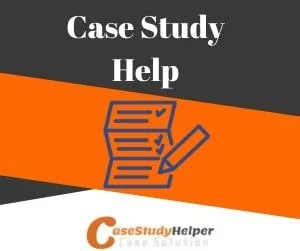

Preem A Case Study Solution
Preem A Case Study Help
Preem A Case Study Analysis
The following area focuses on the of marketing for Preem A where the company's clients, competitors and core competencies have examined in order to justify whether the decision to launch Case Study Help under Preem A brand name would be a feasible alternative or not. We have actually to start with taken a look at the type of customers that Preem A deals in while an examination of the competitive environment and the business's weak points and strengths follows. Embedded in the 3C analysis is the validation for not releasing Case Study Help under Preem A name.

Preem A customers can be segmented into 2 groups, final consumers and industrial clients. Both the groups utilize Preem A high performance adhesives while the company is not just involved in the production of these adhesives however likewise markets them to these consumer groups. There are 2 types of products that are being sold to these prospective markets; anaerobic adhesives and instantaneous adhesives. We would be concentrating on the customers of immediate adhesives for this analysis because the market for the latter has a lower potential for Preem A compared to that of immediate adhesives.
The overall market for instantaneous adhesives is around 890,000 in the United States in 1978 which covers both consumer groups which have been identified earlier.If we look at a breakdown of Preem A potential market or consumer groups, we can see that the company offers to OEMs (Original Devices Manufacturers), Do-it-Yourself consumers, repair work and overhauling companies (MRO) and makers dealing in items made from leather, metal, plastic and wood. This diversity in consumers recommends that Preem A can target has various choices in regards to segmenting the marketplace for its new product particularly as each of these groups would be needing the exact same type of product with respective changes in amount, packaging or demand. However, the consumer is not rate delicate or brand name mindful so releasing a low priced dispenser under Preem A name is not a suggested alternative.
Preem A is not simply a manufacturer of adhesives but takes pleasure in market management in the immediate adhesive industry. The business has its own experienced and certified sales force which includes value to sales by training the business's network of 250 distributors for helping with the sale of adhesives. Preem A believes in unique distribution as suggested by the fact that it has picked to sell through 250 distributors whereas there is t a network of 10000 distributors that can be explored for expanding reach through distributors. The company's reach is not restricted to North America only as it also takes pleasure in worldwide sales. With 1400 outlets spread out all across The United States and Canada, Preem A has its in-house production plants instead of utilizing out-sourcing as the preferred strategy.
Core skills are not limited to adhesive production just as Preem A likewise concentrates on making adhesive giving devices to facilitate using its products. This dual production technique provides Preem A an edge over competitors given that none of the competitors of dispensing equipment makes instantaneous adhesives. Furthermore, none of these rivals sells straight to the consumer either and utilizes suppliers for connecting to customers. While we are looking at the strengths of Preem A, it is essential to highlight the business's weak points as well.
Although the company's sales staff is experienced in training suppliers, the fact stays that the sales team is not trained in selling devices so there is a possibility of relying heavily on distributors when promoting adhesive equipment. Nevertheless, it should also be noted that the suppliers are showing unwillingness when it comes to selling equipment that requires servicing which increases the obstacles of selling equipment under a particular brand.
If we look at Preem A product line in adhesive devices particularly, the business has products targeted at the high-end of the market. If Preem A offers Case Study Help under the same portfolio, the possibility of sales cannibalization exists. Given the truth that Case Study Help is priced lower than Preem A high-end line of product, sales cannibalization would absolutely be impacting Preem A sales revenue if the adhesive equipment is offered under the company's brand name.
We can see sales cannibalization affecting Preem A 27A Pencil Applicator which is priced at $275. If Case Study Help is launched under the company's brand name, there is another possible threat which might lower Preem A profits. The reality that $175000 has been invested in promoting SuperBonder suggests that it is not a great time for introducing a dispenser which can highlight the reality that SuperBonder can get logged and Case Study Help is the anti-clogging solution for the instant adhesive.
Furthermore, if we take a look at the marketplace in general, the adhesives market does not show brand orientation or price consciousness which gives us 2 extra reasons for not releasing a low priced item under the business's brand.
The competitive environment of Preem A would be studied by means of Porter's five forces analysis which would highlight the degree of rivalry in the market.
Bargaining Power of Buyer: The Bargaining power of the buyer in this industry is low especially as the purchaser has low knowledge about the product. While companies like Preem A have managed to train distributors concerning adhesives, the last consumer depends on distributors. Approximately 72% of sales are made directly by producers and suppliers for immediate adhesives so the buyer has a low bargaining power.
Bargaining Power of Supplier: Given the truth that the adhesive market is controlled by three gamers, it could be said that the supplier delights in a higher bargaining power compared to the purchaser. Nevertheless, the reality remains that the supplier does not have much influence over the buyer at this moment especially as the buyer does disappoint brand name acknowledgment or rate level of sensitivity. This shows that the supplier has the higher power when it concerns the adhesive market while the producer and the purchaser do not have a major control over the actual sales.
Threat of new entrants: The competitive environment with its low brand name loyalty and the ease of entry shown by foreign Japanese rivals in the instant adhesive market suggests that the market permits ease of entry. If we look at Preem A in particular, the business has dual capabilities in terms of being a manufacturer of instant adhesives and adhesive dispensers. Potential hazards in devices giving market are low which reveals the possibility of creating brand name awareness in not just immediate adhesives however also in dispensing adhesives as none of the industry players has actually handled to position itself in dual capabilities.
Threat of Substitutes: The danger of alternatives in the instant adhesive market is low while the dispenser market in particular has replacements like Glumetic pointer applicators, in-built applicators, pencil applicators and sophisticated consoles. The fact stays that if Preem A presented Case Study Help, it would be delighting in sales cannibalization for its own products. (see appendix 1 for framework).

Despite the fact that our 3C analysis has actually given numerous factors for not releasing Case Study Help under Preem A name, we have actually a suggested marketing mix for Case Study Help offered listed below if Preem A chooses to go on with the launch.
Product & Target Market: The target market picked for Case Study Help is 'Motor vehicle services' for a variety of factors. There are presently 89257 establishments in this segment and a high use of approximately 58900 lbs. is being utilized by 36.1 % of the market. This market has an extra growth potential of 10.1% which may be a sufficient specific niche market section for Case Study Help. Not only would a portable dispenser deal convenience to this particular market, the truth that the Diy market can also be targeted if a drinkable low priced adhesive is being cost usage with SuperBonder. The product would be sold without the 'glumetic idea' and 'vari-drop' so that the consumer can decide whether he wants to opt for either of the two accessories or not.
Price: The suggested cost of Case Study Help has been kept at $175 to the end user whether it is sold through distributors or by means of direct selling. This cost would not consist of the expense of the 'vari tip' or the 'glumetic idea'. A cost below $250 would not need approvals from the senior management in case a mechanic at an automobile maintenance store needs to acquire the item on his own. This would increase the possibility of affecting mechanics to acquire the product for usage in their everyday maintenance tasks.
Preem A would just be getting $157 per unit as displayed in appendix 2 which offers a breakdown of gross success and net profitability for Preem A for launching Case Study Help.
Place: A circulation model where Preem A straight sends the product to the local distributor and keeps a 10% drop delivery allowance for the supplier would be used by Preem A. Since the sales team is already taken part in selling immediate adhesives and they do not have competence in selling dispensers, including them in the selling procedure would be pricey specifically as each sales call expenses around $120. The suppliers are already offering dispensers so selling Case Study Help through them would be a favorable option.
Promotion: Although a low promotional spending plan should have been assigned to Case Study Help however the truth that the dispenser is an innovation and it requires to be marketed well in order to cover the capital expenses incurred for production, the suggested marketing plan costing $51816 is recommended for initially presenting the item in the market. The planned ads in publications would be targeted at mechanics in automobile upkeep stores. (Recommended text for the advertisement is shown in appendix 3 while the 4Ps are summed up in appendix 4).
